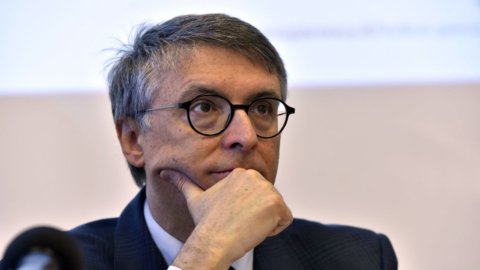The book "The National Anti-Corruption Authority and the life of international relations - The innovative experience of ANAC from 2014 to 2020", Edizioni Scientifiche Italiane, Naples, 2021, co-written by Raffaele Cantone, former President of the National Anti-Corruption Authority – ANAC and currently Chief Prosecutor of Perugia and da Nicoletta Parisi, former councilor of the ANAC and currently professor of International Law at the University of the Sacred Heart of Milan. The topic dealt with, the profile of the international activity of this Authority, proves, in fact, to be particularly suggestive, both for its originality, having so far mainly emphasized the domestic aspect, and for the authenticity of the experiences in the field reported by the two authors.
After an organic and systematic framework of the ANAC in the national regulatory panorama to better understand and evaluate the crucial role and the breadth of the perimeter of the activities carried out, which is followed by the chapter reserved for the legal basis of the international competence of the ANAC, with a description of the international and internal sources and the opportunities for assigning tasks that can be obtained from them, we enter the heart of the treatment of the central theme.
Cantone and Parisi question each other, thus, on the correspondence of the ANAC to the international model of the prevention of corruption; a correspondence, verified not only on the level of theoretical-juridical consistency, but also and above all on the experiential-factual one.
The subsequent analysis of international activities is, therefore, certified by the illustration of the collaborations carried out on a bilateral and multilateral basis. They review the contributions provided by ANAC in various prestigious international forums: just to name a few, from the work of the eighth Conference of the States party to the Merida Convention, to support for the Italian presidencies in the G20 and G7 international assemblies; from participation in dedicated work groups of the OECD, in the Network of Corruption Prevention Authorities and, finally, in the collaboration provided within the European Union.
The reader will then find interesting pages dedicated to the role and activities carried out by ANAC within the international civil society, as well as the various forms of internal repercussions on the Authority and the country, deriving from the multiple forms of international activities examined.
Finally, we arrive at the concluding chapter, in which the two authors draw the sums of this reconnaissance path, emphasizing, in particular, both the proactive role of this Authority in the fight against corruption internally and internationally, and its further potential. With an important final warning, that is, that in this delicate matter the adaptation to the scenarios, in terms of decision-making choices, remains, however, a task of the political power and that the activity of the ANAC can only accompany and effectively support the decisions taken somewhere else.
Ultimately, a reading to be recommended to those who really want to get a detailed and detailed understanding of this five-year experience of the ANAC, stimulating and certainly unprecedented for our regulatory panorama, as well as the significant and lasting results achieved.





